|
  |
|
Page 7 |
Newsletter 108, Spring 2015 © Hampshire Mills Group |
The Mills Research Group Conference 2014
November 2014 - continued from
Newsletter 107
John Brandrick
|
….. The group then visited a
converted corn mill within about 300 yards
of the saw mill. (SO0102093719). This like
many is an outstanding conversion carried
out by a grandson several times removed from
the founder. The mill was visited by DHJ in
1967 and recorded in his paper on the
Watermills of Montgomeryshire. It had two
waterwheels operating in tandem each driving
its own pit wheel. Only one wheel remains at
this time and this drives the pit wheel and
wallower mounted on to the wooden upright
shaft driving a spur wheel and stone nuts
set below the mill stones. Both sets use a
lighter staff for tentering. A crown wheel
is set above them which drove the small
machines. Most of gearing is cast iron
although the stone nuts are wood. The sack
hoist was of the slack belt type but unusual
as it was weighted to hold the hoist on with
a catch to hold it off. It was controlled by
two cords.
Adjacent to the house is a 2
story structure that housed the kiln, which
has been removed. The mill pond has been
dredged and cleaned and (after rebuilding
some of its retaining walls) is fed by an
underground pipeline that supplies an
ornamental fountain operating purely under
gravity from a distant stream.
|
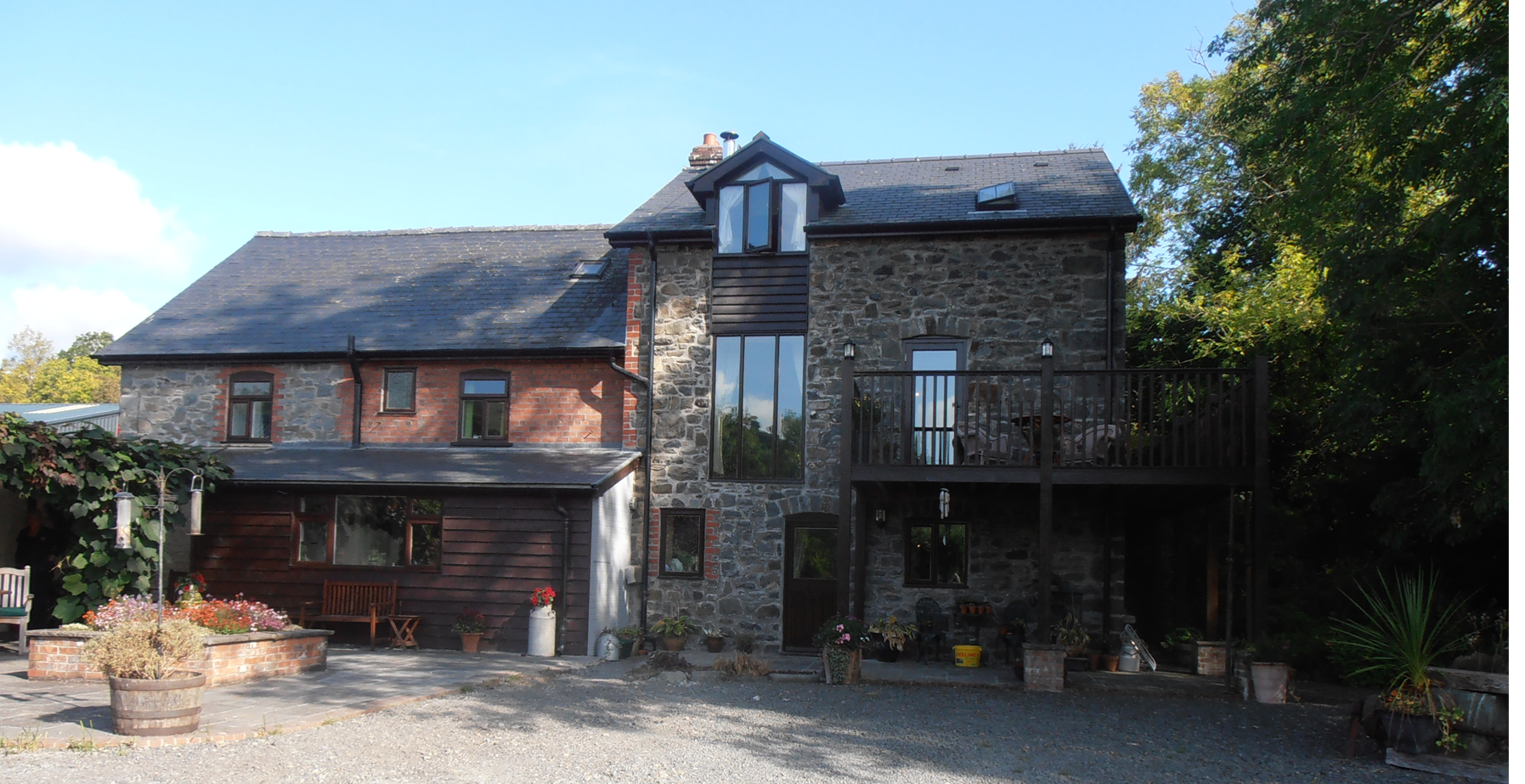
Rear view of the Corn Mill and Millers House
- Conversion for accommodation |
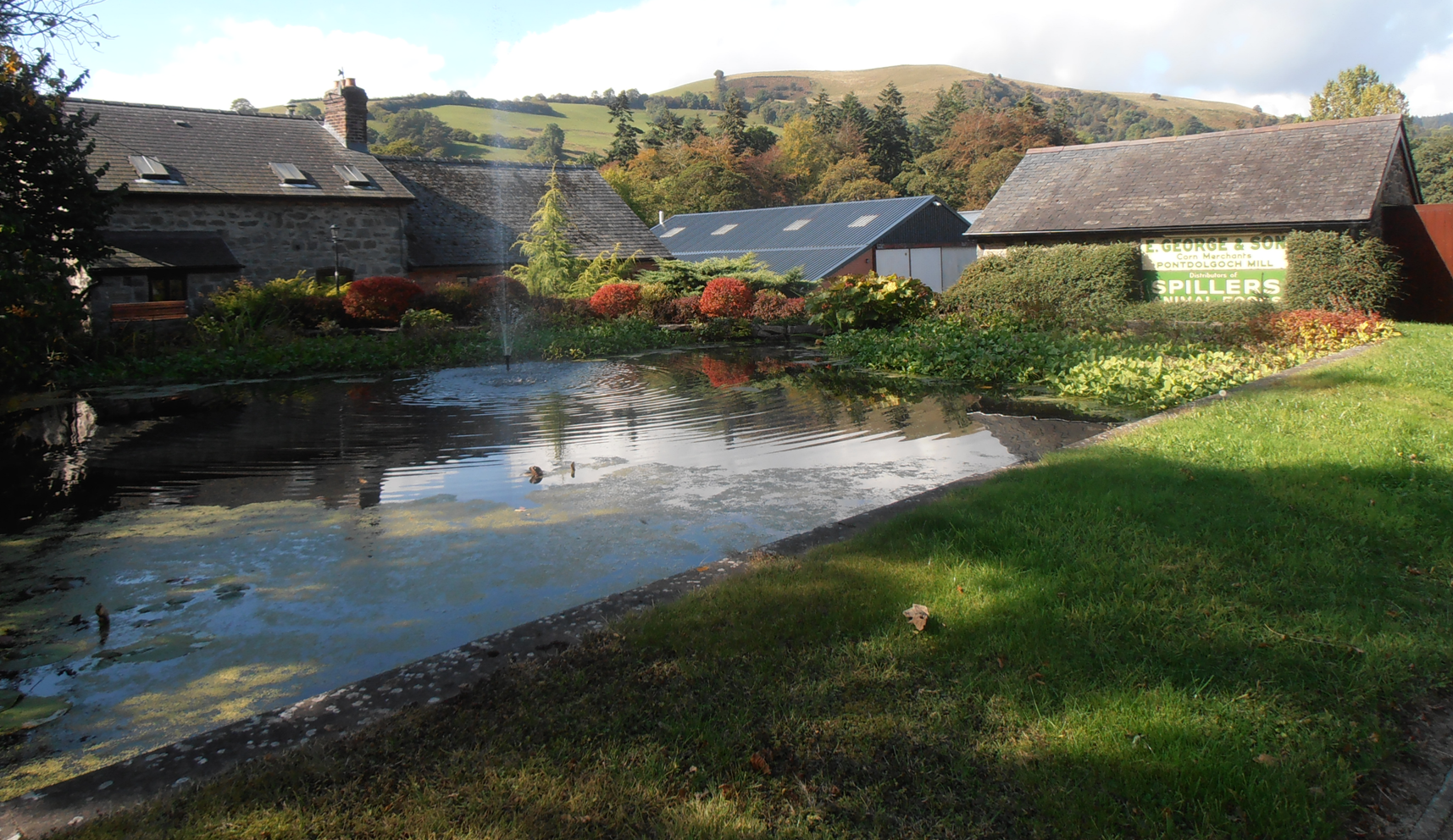
Front view of Corn Mill, Pond and Kiln
Building - taken from the road
|
|
The next mill the group
visited was
Rhydlydan
Mill,
(SO0583593174),
stands by the B4568 Newtown - Llanwnog Road.
It is a detached building, not now
associated with the nearby house and farm
buildings.
The mill building is mainly
of stone, with brick used at the corners and
around openings. It has four storeys
(including the attic) but nearly all of the
second floor is occupied by bins. The kiln
is attached to one end of the building, with
access from the mill on both floors.
A stable was built against
the end of the mill but is derelict. The
mill is in poor condition mainly from a
defective roof and previously timber clad
gables. One part of the kiln has collapsed
due to being undermined by badgers.
A previous owner excavated
the bank behind the mill and destroyed the
mill pond The mill has a new owner who is
preparing to start a renovation programme.
The large overshot waterwheel
is placed within the building, and drove
three pairs of stones by spurwheel gear.
This plant is most unusual,
in that the stones are overdriven and most
carry a double row of staggered cogs. The
smaller machines were driven by two pinions
engaging the spurwheel, and one engaging a
bevel tooth ring on the spurwheel arms.
Apart from the waterwheel and
the pitwheel, nearly all the plant is
wooden. There are two flour dressers; being
a wire machine and a bolter. The oatmeal
machine was an open-fan type, under the meal
bin. A late 19th century American smutter
stands on the first floor, but not in its
working position. The slack-belt sack hoist
is in the attic and has the local
‘latch-off’ mechanism, as at Pontdolgoch.
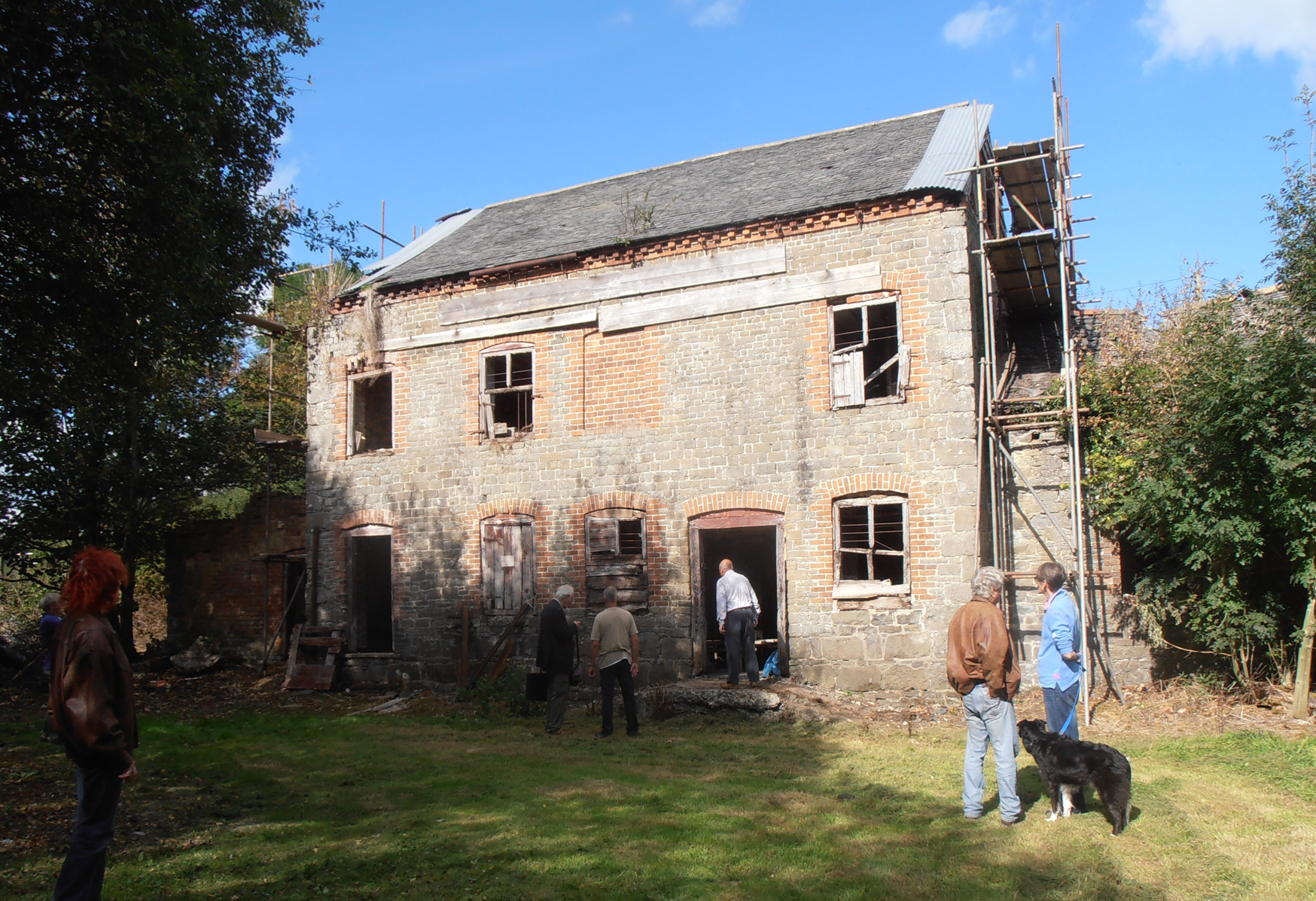
Rhydlydan Mill
The kiln is a ‘funnel’ type,
with a central brick stove about 4' high
with a castellated top capped with stone to
provide four openings one on each face at
the top for the smoke to escape within the
funnel. Apart from the high quality of
structure and millwork, this mill is most
interesting as an
example of the adaption of a ‘foreign’
tradition to local conditions. All its main
design features derive from another region.
The internal waterwheel, the great headroom
on all floors, the very well- developed bin
floor - all this would be commonplace in
East Anglia, or Kent, but quite out of place
in Mid Wales. Even the overdrive is not
unknown in eastern England, but elsewhere it
is very rare. Each pair of stones has a
loading platform by its hopper, with a
ladder to it, for grinding small parcels of
grain.
See
www.milldrawings.com/html/rhydlydan.html
|
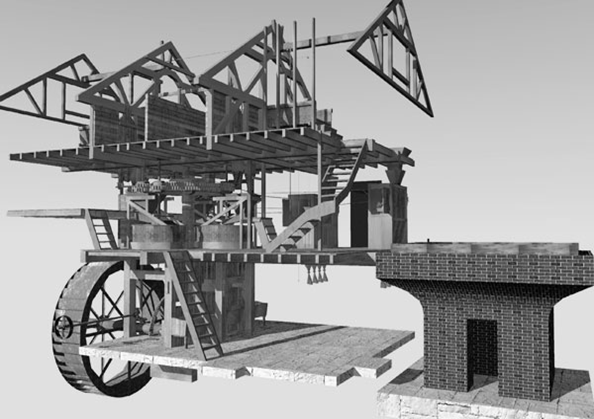 |
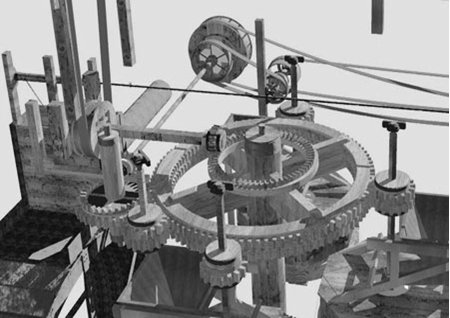 |
|
The next mill was
Llifior near Garthmyl,
(SO1832998714),
an eighteenth century water-powered corn
mill. It has two storeys plus an attic
floor, with walls of red brick under a slate
roof. The mill retains most of its machinery
including an all-iron overshot waterwheel,
probably dating from a rebuild following a
fire in the nineteenth century, mounted on a
(now removed) wooden axle. Inside, a lay
shaft drove two pairs of stones from below
by bevel gears; there was a wire machine. A
timber-framed seventeenth century mill house
is adjacent on the east side and a later
cross wing has been added to the east of the
house, incorporating the grain drying kiln.
Water
was supplied to the mill in a leat from a
weir and sluice some 360m to the west on
the Llifior Brook; the tail race to the
brook was some 55 metres long. There was no
pond, but the leat widened towards its
eastern end near the mill.
See
www.milldrawings.com/html/llifior.html
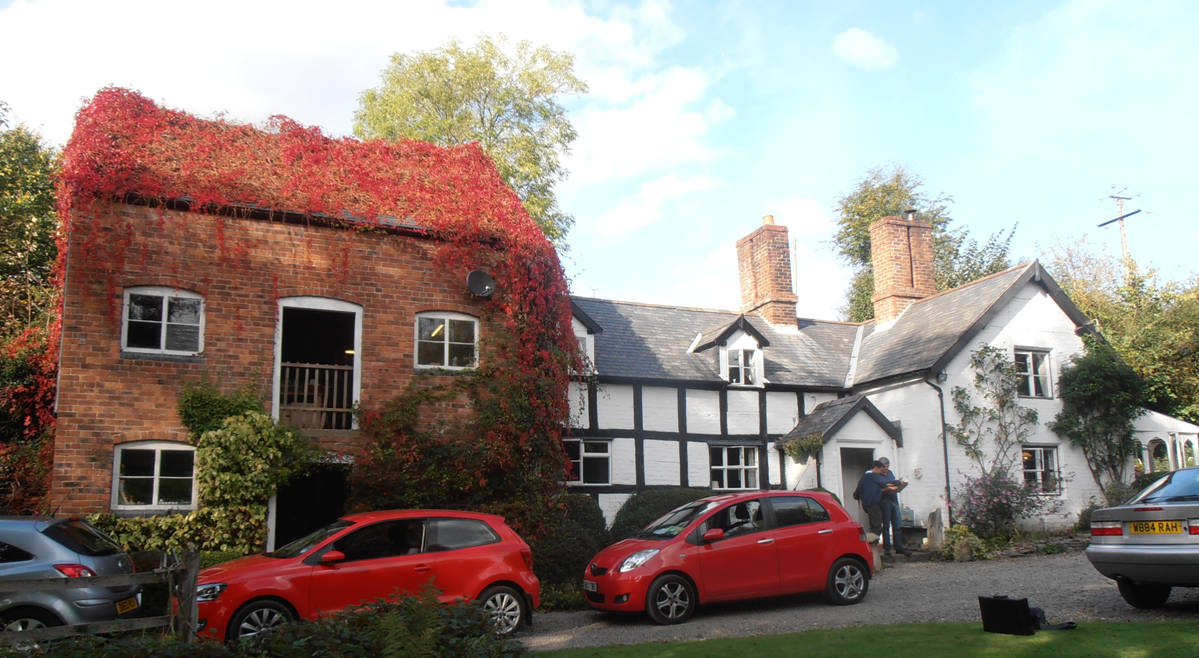
Lilifior Mill and Mill House
|
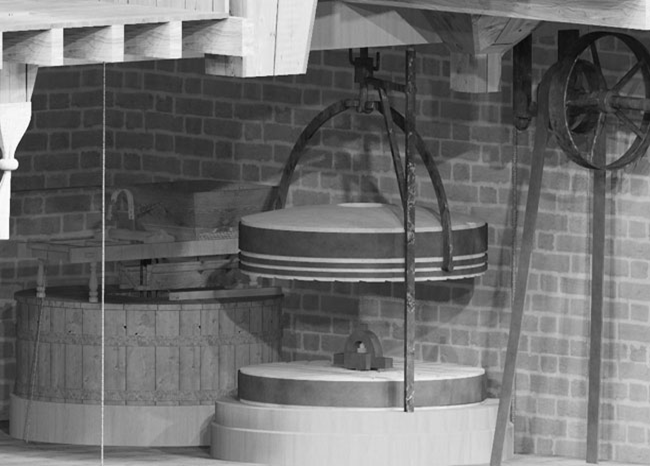 |
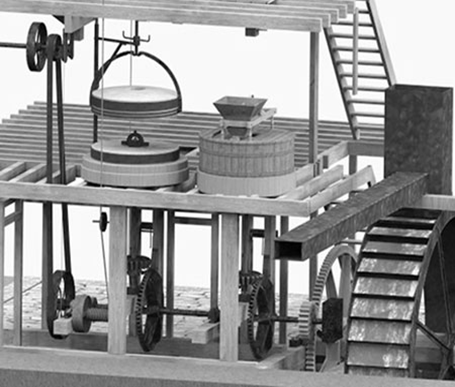 |
|
The final mill visited
Pontysgawrhyd
(SJ1943715520) was originally
built as two mills, the left side is
believed to have been a mirror image of the
right. And probably built by the famous
millwright William Hazeldine as many of the
components reflect his style, but the layout
of the attic is uncertain. A brick barn was
added to the mill which housed a Thresher
and possibly other farm machinery and was
present when DHJ visited in 1967.
The crown wheel still has an
auxiliary shaft which drove it before the
building became derelict due to a defective
roof . There are signs of two other shafts
that drove the sack hoist and a flour
grader. At some point the left mill was
destroyed but doorways and fire places for
both mills still exist on the dividing wall.
The mill became virtually derelict and
generally unsafe until about 10 years ago
but is now being carefully restored as time
and funds permit. See
www.milldrawings.com/html/pontysgawrhyd.html
...and so ended a most
enjoyable weekend . The owners of all the
mills we visited made us so welcome. The
weather was fine. The company was great.
Photographs by Ros
|
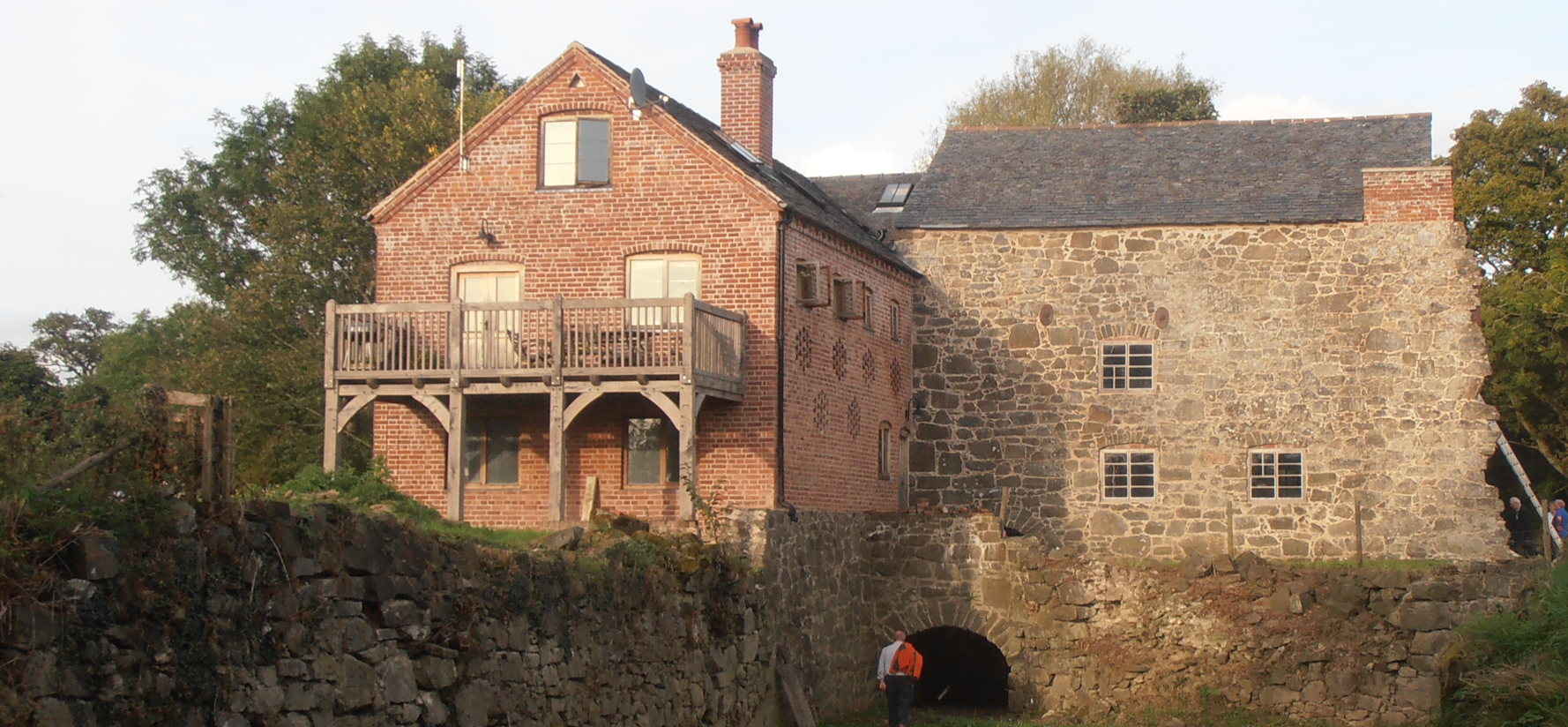
Pontysgawrhyd Mill
|
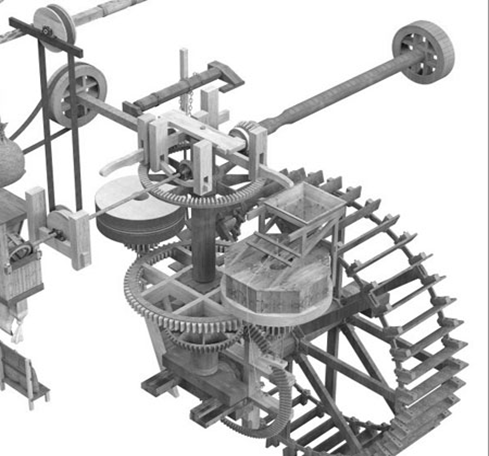 |
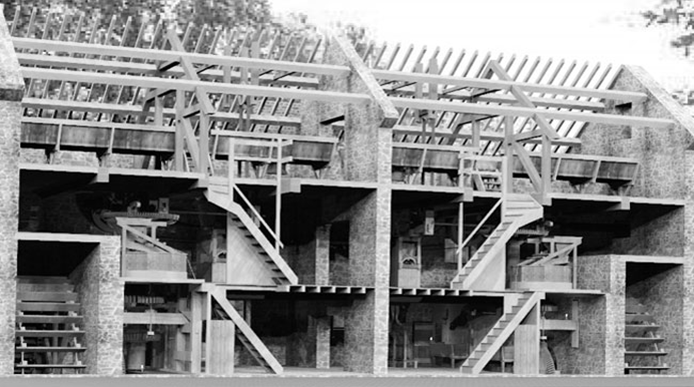 |
|
  |
|
|
